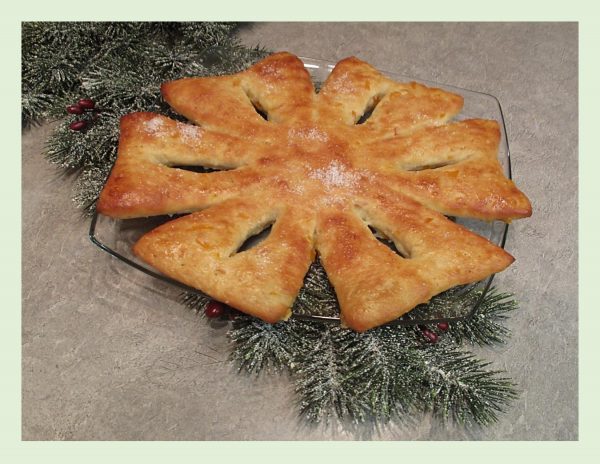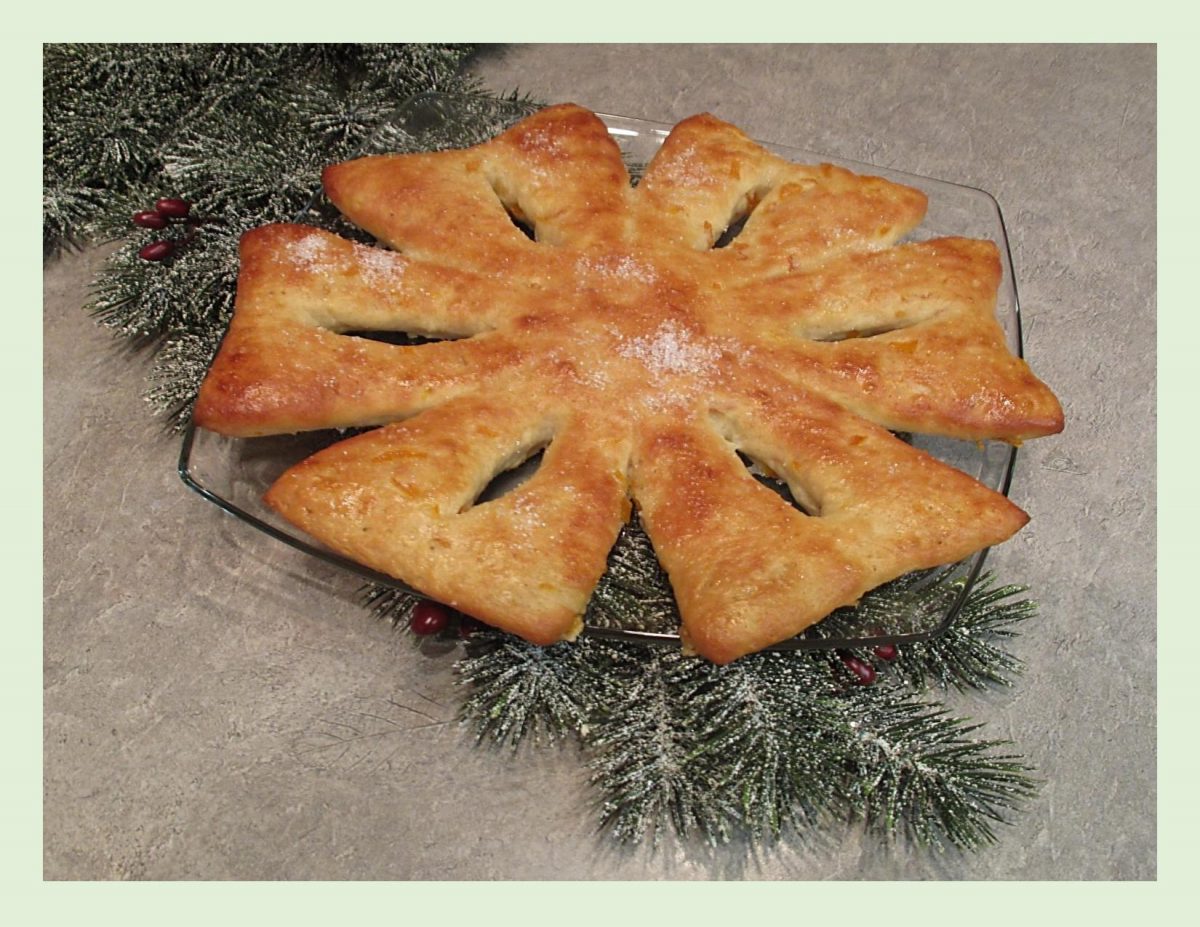Among the world’s many artisan breads and cakes, the breakfast bread ‘gibassier’ is one of the most popular in the French tradition. This buttery, textured bread is somewhat like an Italian panettone. What makes gibassier unique, is the use of orange blossom water which gives the bread a distinct flavor that is difficult to replicate with any substitute.
The recipe appears to have originated in the rocky, southeast of France, in Lourmarin Village, Provence. Many believe that this generations-old treat is named after the mountain called Le Gibas, which forms part of the village’s horizon.
Gibassier can be shaped and made as one big round loaf or larger or smaller single serve breads. Whatever size they come in, they are slashed or snipped decoratively before they are baked to give the fleur de lis or snowflake appearance.
It is difficult to say whether gibassier is a biscuit, a pastry, doughnut or a cookie. One thing is for sure …. its taste is unique. Traditionally served at breakfast and is dipped into honey butter while it is still warm.
Each Christmas I enjoy to try making a Christmas bread from another culture. Of course, that means as an extra bonus, researching the food history behind it.

| Servings |
|
- 1/2 cup lukewarm water
- 4 1/2 tsp active dry yeast
- 2 Tbsp sugar
- 3 cups flour
- 1/4 tsp salt
- 1/4 cup sugar
- 2 tsp aniseed, powdered
- 2 eggs
- 1/4 cup butter, melted
- 1 tsp orange blossom water
- 2 tsp orange zest
- 1/2 cup candied orange peel
- 1 egg + 1 Tbsp water for egg wash
- sugar for dusting (optional)
- honey & butter for serving
Ingredients
|

|
- In a small bowl, combine water, yeast & 2 Tbsp sugar. Allow to sit until foamy, about 10 minutes.
- In a large bowl, whisk together flour, salt, 1/4 cup sugar & aniseed. Make a well in the center of the flour mixture & add eggs, butter, orange blossom water, orange zest & candied orange peel. Whisk to form a slurry, pulling in a little flour from the sides of the bowl.
- Pour the yeast mixture over the egg slurry. Mix to make a 'shaggy' dough. Turn out on a floured surface & knead until a smooth, elastic dough forms, about 10 minutes.
- Place the dough into a lightly buttered bowl, cover with a tea towel & allow to rise in a draft-free place until doubled in size, about 1 1/2 - 2 hours.
- Punch down the risen dough & turn out onto a lightly floured surface. Divide into two equal pieces & shape each one into a ball. Line two baking sheets with parchment. Flatten each ball of dough into a disc about 1.5 cm thick & place each one on one of the baking sheets. Cut the disc into 6 sections, leaving them connected at the center.
- Make a cut through the center of each section without cutting all the way through to the edge. Best to use something you can press straight down as opposed to dragging a knife through the dough. Pull the sections outward to separate & elongate them a little. Using your fingers, open out the slits & form a V-shape in the top of each section.
- Cover each loaf loosely with buttered plastic wrap. Set aside to rise in a draft-free place for 45 minutes to 1 hour.
- Preheat oven to 350 F.
- Brush each loaf with a little egg wash. Bake for 20-25 minutes until golden & baked through. Slide the loaves onto a wire rack & brush with honey butter while still warm or dust with sugar.

